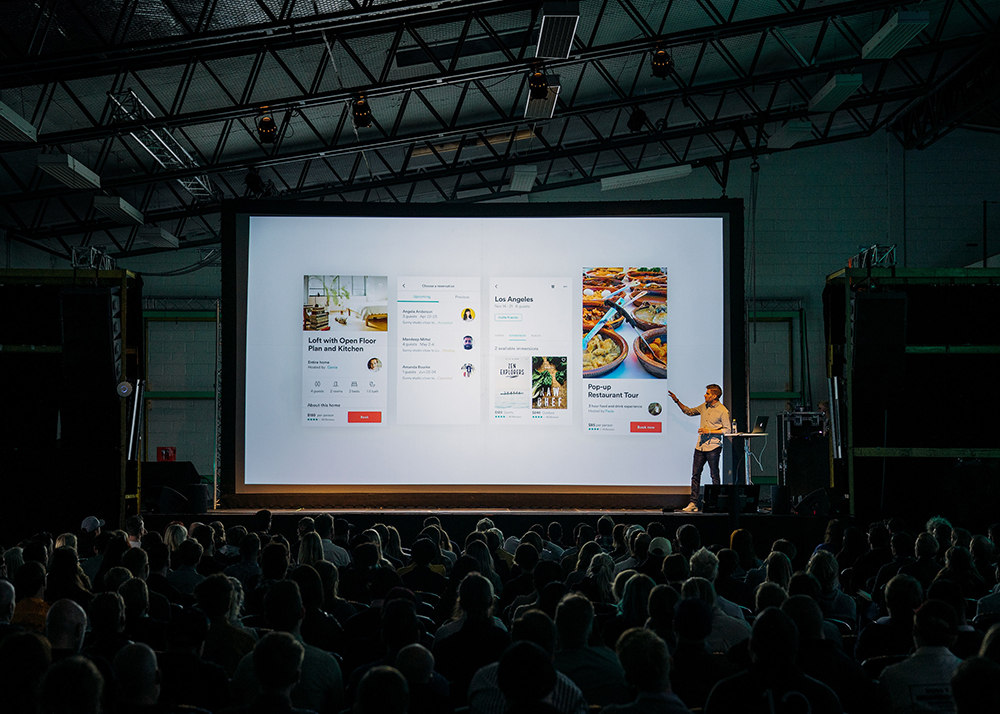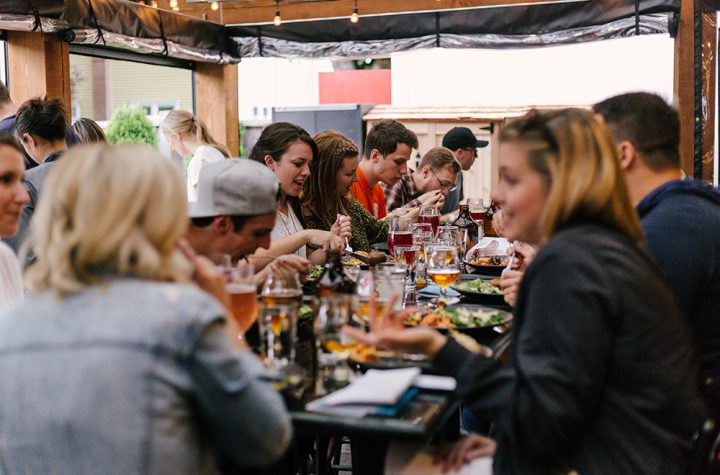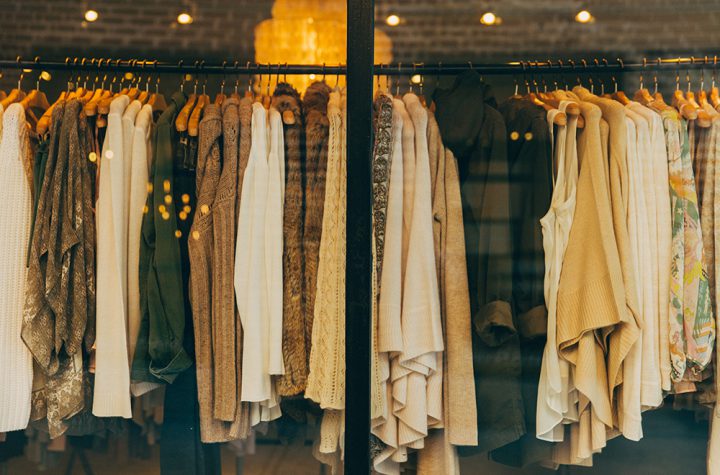
Marie Kondo wants to put the record straight. “A lot of people define me as a minimalist — that I’m someone who’s going to come into your house and throw everything away. But that’s far from the truth.”
Surely Kondo has made a career from instructing people to clear out their clutter? The emphasis is wrong, she insists by way of her interpreter, Marie Iida, over video conference. The goal for those following her KonMari tidying method is less about throwing stuff away, more about finding the possessions that make you happy — or, in her catchphrase, “spark joy”.
But as homes across the world double as offices, schools and nurseries, few will find their happy place among the laptops, tangled cables and newly bought printers that have overtaken kitchen tables. To some, the idea of a Kondo-style serenity will seem like an impossible ideal.
Yet Kondo says it is more important than ever. “More people are tidying,” she says, but she finds my suggestion — that this might meet a desire for control when the world outside is berserk — too crass. It is about finding “joy, calm and peace”, she insists.
Clutter has increased during the pandemic, as well as stress levels. Even Marie Kondo says: ‘I’m not always calm and collected, especially when I’m exhausted after a day of work. I’ll just say, I’m going to bed. That’s it’ © Bloomberg
“We’re all mired in vague unarticulated anxiety right now,” she says. “And tidying provides you with a strong foundation to ask questions of yourself: ‘What’s important to me right now? How do I want to live?”
To help them through it, Kondo has just launched a 10-episode online course that, for $39.99, takes people through her tidying method step-by-step, teaching everything from folding techniques to storage solutions.
The KonMari system encourages people to tidy by category rather than room, sifting through books, toiletries, sentimental keepsakes, holding each item in their hands to see if it elicits a frisson of happiness.
In one of her video lessons, she cites the example of a woman who, after going through her books, realised the ones on child-rearing made her happy — and decided to give up her job and go into childcare.
Marie Kondo, queen of the ‘cleanfluencers’, bestselling author and television star, has launched an online course tailored for the challenges of homes doubling as schools and offices © KonMari Media
It was her 2011 book, The Life-Changing Magic of Tidying Up, that brought Kondo to international attention when it was translated into English in 2014 and became a publishing sensation. It has been translated into 40 languages and has sold over 10m copies.
That was followed with Spark Joy: An Illustrated Master Class on the Art of Organizing and Tidying Up and earlier this year, Joy at Work. She launched KonMari Media and last year, the Netflix series, Tidying Up with Marie Kondo, transformed her into a television star.
Her success has even spawned an anti-Kondo book, The Life-Changing Magic of Not Giving a F**k.
Kondo hopes her online course will help people struggling with their home environments. The pandemic demands we fundamentally rethink the use of our homes. “It really begins with an honest discussion with your family [and] you need to have an honest conversation about [turning] space into your workspace,” she says.
It is one thing to live in a light-filled house as she does, another to share your living space with several housemates all working away feverishly. She is empathetic — after, all “houses in Japan are not very big”.
Home schooling has become a reality for many © Bloomberg
For those who feel overwhelmed by the blur between work and home, she advises dumping work paraphernalia in a box tidied away and out of sight at the end of the day.
She admires the ruthless prioritising and scheduling of her husband, Takumi Kawahara, who is also the chief executive of KonMari Media. “He is able to set very distinct times for breaks,” she says. “And never seems flustered.”
Lockdown in Los Angeles, in the home she shares with her husband and their two daughters, who are three and five, was “a little chaotic”, she says. Did she lose her temper? “It was just sheer physical exhaustion.”
Marie Kondo with her husband Takumi Kawahara, chief executive of KonMari Media, at last year’s Oscars ceremony © Reuters/Alamy
Her serene TV persona, she says, is not sustainable 24/7. “I’m not always calm and collected, not at all, especially when I’m exhausted after a full day of work. And I’ll just say, I’m just going to bed. That’s it.”
By Kondo’s account, her celebrity is a surprise. “Looking back at my childhood, I was never the centre of my friends or anything like that. But when it came to the written word, writing books, I was always able to express my feelings in a straightforward manner. It’s still surprising to me that writing books has led to so many opportunities for public speaking.”
An episode of last year’s Netflix series ’Tidying Up With Marie Kondo’ © Netflix
Nonetheless, other accounts put it that her celebrity was rather strategic.
While running a busy tidying consultancy, she pitched a book on the subject, snapped up by an editor who saw her potential as a media personality, achieved in part by internet marketing. If the metric of celebrity is memes, Kondo is a superstar.
Social media is saturated with riffs playing on her sweetness. My favourite is a tweet set out like a play script: MARIE KONDO: Hold this book and see if it sparks joy; ME: Wow, it does; MARIE KONDO (removing fake book jacket): That book was Mein Kampf.
To her fans, Kondo is a mesmerising angel: diminutive, delicate and softly-spoken. To her critics, she is a symbol of late-stage capitalism, the latest in a line of self-help gurus promising happiness through life lessons to those wealthy enough to discard their possessions.
‘To her fans, Kondo is a mesmerising angel. To her critics, she is a symbol of late-stage capitalism’ © KonMari Media
Kyle Chayka, author of The Longing for Less: Living with Minimalism, says Kondo gives people an easy solution to something that has been bothering them: “We find that the possessions we’ve accumulated aren’t satisfying and don’t make us happy, no matter how much we have. More of them pile up because we’re still dissatisfied. The problem is capitalism and consumerism.”
Kondo seems to have some sympathy with such a view. She describes her popularity as being rooted in people’s “dissatisfaction in their hearts”, which they tried to fill by “buying things”.
She says she was “able to articulate and break through that miasma . . . and offer a kind of liberation”. Nonetheless it is hard to reconcile such freedom with her online shop, which peddles woven tea baskets for $25 or $190 bookends.
Kondo with her daughter in LA. She encourages her children to be tidy: ‘A small trick is that I’m always going about my tidying with a smile on my face’ © KonMari Media
Timing was key to Kondo’s popularity, says Roland Kelts, author of Japanamerica. “What’s rented as an apartment in Tokyo used to be considered unlivable in New York or London,” he says.
But rising rents and house prices in western cities put a premium on space. “Tokyo has more affordable housing, but you learn very quickly that if you don’t get rid of excess stuff that you don’t need to keep your tiny spaces tidy, you’ll go nuts.”
Through her delightful earnestness, he says, she can ride a wave of Japanese ideas sold to the west, including “forest bathing (shinrin-yoku) — the obvious and age-old benefits of going for a walk in the woods — and ikigai, or finding a reason to get out of bed in the morning”. It can be pitched as charming, he says, because “Japan is no longer an economic threat”.
House & Home Unlocked
FT subscribers can sign up for our weekly email newsletter containing guides to the global property market, distinctive architecture, interior design and gardens. Sign up here with one click
Kondo’s career has its roots in her childhood, growing up in Tokyo. “I was really influenced by my mother, who always appeared to look like she was having fun when she was a stay-at-home mother,” she says.
“She would always tell me that keeping her home is a significant contribution to society. So, I became interested in all things housekeeping: including cooking, serving, cleaning and so forth. And I would read magazines on the topic.”
Tidiness is something she encourages in her children. “A small trick is that I’m always going about my tidying with a smile on my face. That’s very infectious for my daughters.”
Although she would resist such a description, Kondo (3.8m Instagram followers) is probably the best known of the cleanfluencers — a female army of social-media influencers dedicated to tidying and cleaning, including the British Mrs Hinch (3.8m followers), and Clea Shearer and Joanna Teplin, Tennessee-based friends and business partners behind The Home Edit (4.1m followers plus a new Netflix show). In a world of chaos, all promise a domestic balm to our fevered souls.
‘Cleanfluencers’ Clea Shearer and Joanna Teplin in an episode of their Netflix series ’Get Organized with The Home Edit’ © John Shearer/Netflix
Jenna Drenten, associate professor of marketing in the Quinlan School of Business at Loyola University Chicago, says cleanfluencers take “women’s traditional domestic labour and repackage it as a display of empowerment”. Coming at the same time as the self-care movement, “Cleaning is increasingly marketed as less of a chore and more of a form of empowered self-help.”
During lockdown, women found themselves juggling work with other duties. In the UK, the Institute for Fiscal Studies found mothers combined paid work with childcare for 47 per cent of their work hours, compared with 30 per cent of fathers’ work hours.
Does Kondo worry that being the demure poster girl for tidying reinforces gendered roles? She praises her husband and denies that “housework belongs to women”. It is “high time for a change”, she says. “For me, tidying should be as natural as brushing our teeth.”
Tidy desk, tidy mind?
Marie Kondo suggests constructing drawer dividers and compartments from old boxes to help you order your belongings, but the design world has its own ideas. Here is a round-up of home-office help. By Victoria Woodcock
Karakter Copenhagen
The Danish brand’s 1562 Desk Organiser is a sleek storage set-up for papers and documents; its minimalist form in oak and black steel was conceived by mid-century American designer Paul McCobb as an accompaniment to the 1595 Console Table. £415, nest.co.uk
Vitra
Since it was designed by Dorothee Becker in 1969, the wall-mounted Uten.Silo has been stylishly collecting all manner of odds and ends in its moulded-plastic pockets — and keeping desktops clutter free. From £249, vitra.com
Ben Sutton
The east London ceramicist has hand-thrown porcelain into three tactile vessels that function as pen pots and paperclip holders — fusing Scandinavian design with Japanese simplicity for workplace feng shui. £95, thegarnered.com
Octaevo
Inspired by architectural shapes, the Barcelona brand’s colourful moulded-resin Templo catch-alls capture desk detritus in abstract forms and Mediterranean hues. £34.50; dowsedesign
Emma Jacobs is the FT’s work and careers columnist
Follow @FTProperty on Twitter or @ft_houseandhome on Instagram to find out about our latest stories first





More Stories
After a cluster of new COVID-19 cases among the White House staff and a campaign offical, the election night watch party in the White House has become another symbol of U.S. President Donald Trump’s cavalier attitude toward a virus that is ripping across the …
Rob Lucas says the SA economy is forecast to go backwards by 0.75pc in 2020-21, a better outcome than a national economy forecast to shrink 1.5pc.
Labor and crossbench senators want changes to JobMaker, arguing too many workers will be excluded from the hiring credit scheme.